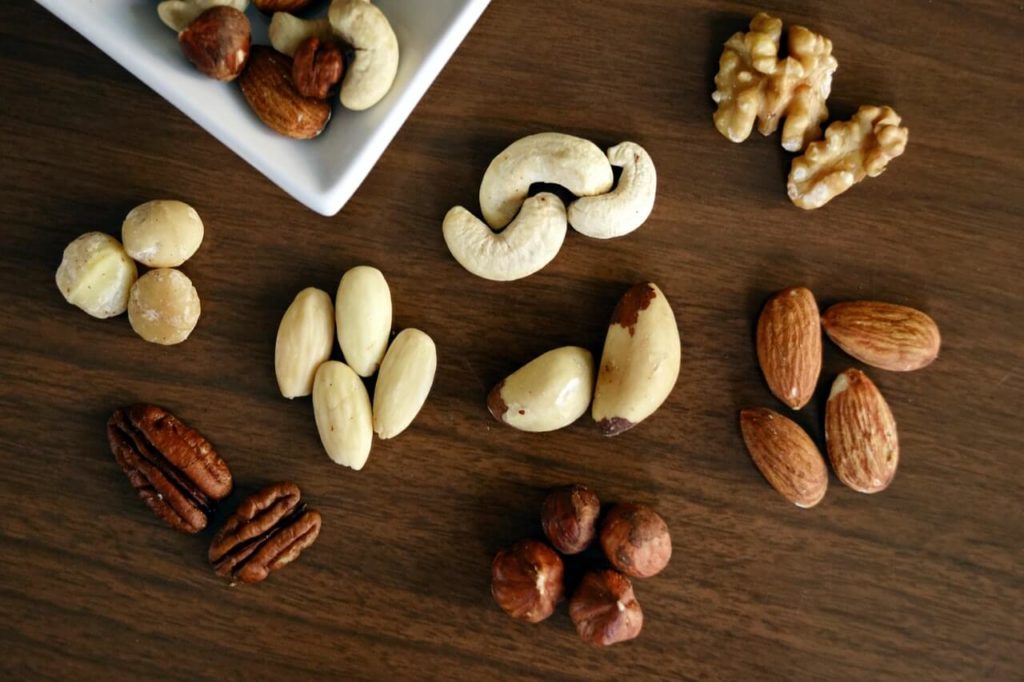Have you been learning about the keto diet? Or, just studying it closely? Chances are you’ve come in contact with the term “macros” and are wondering why it matters so much. Everywhere you go, you hear the term, “If it fits your macros.”
But what exactly does this mean? And why do we keep saying it when it just confuses newcomers to the keto lifestyle? As far as I knew, macro was a gaming term!
But there’s no video gaming going on here. Macros mean Macronutrients when talking about the keto diet. Macros in keto really do matter, and we will show you why.
Getting the concept of macros down matters so you can select the right keto foods. It will help you balance out fats, carbs, and protein, so you can stay in ketosis, stay there, and burn fat like a machine.
Let’s begin with a discussion of the three macros: Carbs, protein, and fat.
Carbohydrates
Carbs are comprised of starches and sugars. To reach a state of ketosis, you have to limit the amount of carbs you take in. Fiber is a carb, but you don’t count fibers toward your total amount of carbs for the day.
We can’t digest fiber all that well, so it minimally impacts blood sugar.
What does this mean for keto dieters?
When reading over nutrition facts, check the line that reads “total carbs.” Then, go to the line that indicates ‘fiber”. Subtract fiber from carbs, and you end up with the net carb amount.
In summary: Total carbs minus fiber = Net Carb
Net carbs are starches and sugars leftover once fiber is subtracted. Net carb amount is what you need to total up for your meals and track as a means of meeting your daily carb allowance, NOT total carbs.
Limiting your carbs is difficult at first, but you can do it. Begin by figuring out what foods are low carb and also which ones to stay away from.
You can carefully read nutrition labels, create your own meal plan, buy a meal plan, or consult a friend to help you create a keto-friendly menu. Find out just how many carbs are in the foods you want to consume and make sure it fits your carb goals for the day.
If you’re just beginning on the keto diet, 20g net carbs a day is a good starting point.

Protein
We need protein for proper immune system function, repair of tissues, growth, and for the creation of enzymes and hormones. It gives us energy when carbs are not available anymore and helps us keep our muscle mass. It is vital for all biological functions. These are the foundation blocks our body needs to grow and stay healthy.
The body breaks protein down into amino acids. 9 of these cannot be made by our body, so they must be attained from the foods we eat—Valine, tryptophan, threonine, phenylalanine, methionine, lysine, leucine, isoleucine, histidine.
If we are deficient in any of these amino acids, health conditions like malnutrition or even kwashiorkor can occur. The latter is rare, but still, a reason to get your nutrients in each day.
Protein Amounts Needed
For a keto diet, you must consume enough protein to maintain your lean body mass. What you need will depend on the amount of lean body mass you already have, but here are some general ideas:
.7 to .8g of dietary protein per lb. of muscle as a means of preserving muscle mass
.8 to 1.2g of protein per lb. of muscle as a means of gaining muscle mass
As you can see, we only discussed GAINING or PRESERVING muscle mass. One should not aim to lose their lean body mass. Many of us are doing keto because we want to lose weight, but this often comes with the side effect of losing muscle as well as fat.
You want to lose fat but save all the muscle mass, so make sure protein intake is where it needs to be. It’s important in terms of keeping your metabolism healthy and for your shape. It’s fat we want to lose, not healthy muscle mass!
Meanwhile, you don’t want to eat protein like a madman while following keto. Too much protein can damage the kidneys or, at the very least, put them under a lot of stress. It could negatively affect ketosis also. Stick with the ranges we mentioned depending on what your health goals are.
Here’s how to calculate how much protein you need: Take your amount of lean body mass and multiply this by the protein requirement (the number that dictates you need X amount of protein per lb. of lean body mass).
Example of What We Mean
Assuming you weight 160 lbs. and have 30% body fat, let’s work this out:
160lb x .30 = 48lb body fat
160-48=112
You are left with 112lb of lean body mass.
Now let’s multiply 112 x .8 (we want to maintain that 112lb of lean body mass).
112 x.8 =89.6
You need roughly 90g protein a day to keep that lean body mass up to par.

Fats
We need minimum amounts of fat in our diet for development, growth, and energy. We also need them to absorb various vitamins like K, E, D, and A, plus carotenoids. We also must have some fat so organs can be cushioned, and cell membranes are maintained.
Plus, let’s be honest: Fat makes food taste good and helps us feel full.
Dietary fats are broken down into glycerol and fatty acids. There are two fatty acid types out there that our body is unable to synthesize, so they must be included within your diet. Linoleic acid and linolenic acid are the names of these fatty acids.
Dietary fats are so satiating. Low-fat foods were put on a pedestal for a while there, but low-fat diets only leave you feeling hungry. Meanwhile, eating healthy fats like avocado help, you stay full.
How Much Fat Do I Need?
If you’re keeping carbs to 20g or less a day and eating the protein you need to keep your muscle maintained, you can meet the rest of your dietary needs using fat.
To keep your current weight maintained, eat enough calories sourced from fat to maintain your TDEE or total daily energy expenditure. This is your resting BMR or basal metabolic rate plus the energy used during everyday activities put together.
If you want to drop weight, you have to eat at a deficit, so the number of fat calories you take in must be reduced. Weight loss is easy: take in fewer calories than you burn!
Calculating Macros for Keto Diet
You COULD manually calculate out your macros if you felt so inclined. However, this info is nothing more than a big description of the keto macro calculators you can find out there on the Internet. Some will utilize different formulas to work up their information, but the result is generally the same across the board.
I use the Keto Gains calculator to get the information I need about macros.
Example of Using the Calculator
Now let’s make up a character. We’ll call her Meg. Meg is 180 lbs. and stands at 5’4″. She is 28 years old, wants to get started at the gym, and works at a phone company as the receptionist. So, Meg is a sedentary lady at the moment.
Meg’s never done keto before, but her goal is to lose some of that excess fat. We will estimate she has 30% body fat.
So, let’s plugin Meg’s data and see what we get:
1604 calories is her BMR.
We stated she had a sedentary lifestyle.
We put in 30% body fat.
This gets us the following macros:
126 g protein for 39% of daily calories
20g net carbs for 5% of daily calories
84g fat for 55% of daily calories
Meg’s base daily calories is going to be 1340, which will increase to 1530 when we account for her going to the gym for a moderate-intensity workout.
By eating at 1530 calories and doing so in a way that fits her macros, Meg can count on dropping weight at a sustainable and comfortable rate.

“Track Your Macros!”
When somebody tells you to keep track of your macros, there’s a reason for that.
- Figure out your health and wellness goals. Do you want to pack on muscle, lose fat, or just get into ketosis because of the benefits?
- It helps you create meal plans and eating habits that work for you, keep you satisfied and keep you away from the “junk foods” and other things that hinder your progress.
- It makes you aware of what is in the foods you eat, what you would like to eat, and what you should avoid in order to achieve your goals.
- It helps you figure out exactly what you need to eat in order to get into ketosis and achieve all your health goals.
Believe me, guys, I hated tracking macros at first. It stressed me out and made me irritated. But, as I learned more and more about keto, I was able to figure out what was OK to eat and what should be avoided so that I could stay in keto or come out when necessary.
It gets a lot easier, and soon you might not even need to track at all once you’ve figured out an eating plan that works for your body.
But for now? Write it down. If nothing else, you can pass what you’ve learned along to another new keto dieter sometime.
Conclusion
I don’t think tracking macros is the most fun part of keto, but it sure does help. It really takes the guesswork out of what to eat. And once you figure out your macros, it’s fun to plan meals around them.
As Alexander Graham Bell once said, “Before anything else, preparation is the key to success.” So, prepare those macros and eat well, my friends!

